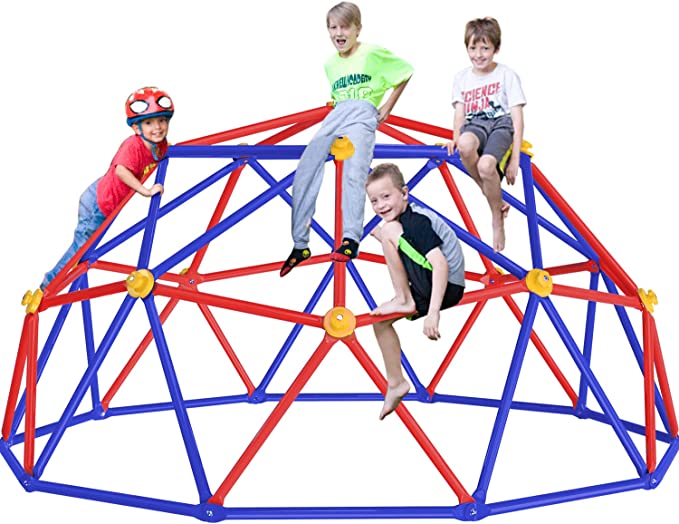Aspects of climbing domes
2024-03-16
A climbing dome is a structure typically found in playgrounds, recreational areas, or fitness facilities designed to provide a challenging and fun climbing experience for children and adults alike. It consists of a framework of interconnected metal bars or ropes arranged in a dome shape, creating a series of climbing surfaces and pathways.
Here are some key features and aspects of climbing domes:
1. Structure: Climbing domes are typically constructed from durable materials such as steel or aluminum for the frame, with additional elements like ropes, nets, or panels forming the climbing surfaces. The frame is designed to be sturdy and stable to support the weight of climbers.
2. Dome Shape: The dome shape of the structure provides multiple angles and surfaces for climbing, offering a diverse range of challenges and routes for climbers to explore. The varying inclines and angles make climbing more engaging and stimulating.
3. Climbing Surfaces: Climbing domes may feature a variety of climbing surfaces, including metal bars, ropes, ladders, handholds, or textured panels. These surfaces provide different levels of difficulty and cater to climbers of varying ages and skill levels.
4. Safety Features: Safety is a priority in climbing dome design. The structure is typically surrounded by impact-absorbing surfacing such as rubber mulch, sand, or safety tiles to cushion falls and reduce the risk of injury. Additionally, guardrails or safety nets may be installed at higher levels to prevent climbers from falling.
5. Accessibility: Many climbing domes are designed to be accessible to climbers of different ages and abilities. They often include multiple entry points and routes, allowing climbers to choose challenges that suit their skill level. Some climbing domes may also incorporate features such as ramps or platforms to accommodate individuals with disabilities.
6. Social and Physical Benefits: Climbing domes offer a range of physical and developmental benefits for climbers. They help improve strength, coordination, balance, and motor skills while providing a fun and engaging way to stay active. Climbing also encourages problem-solving, decision-making, and social interaction among participants.
7. Customization and Design: Climbing domes come in various sizes, designs, and configurations to suit different spaces and preferences. Some may feature additional elements like slides, tunnels, or overhead obstacles to enhance the climbing experience further.
Overall, climbing domes provide an exciting and challenging recreational activity that promotes physical fitness, skill development, and social interaction in a safe and controlled environment. They are popular additions to playgrounds, parks, schools, and fitness centers, offering endless opportunities for exploration and adventure.



